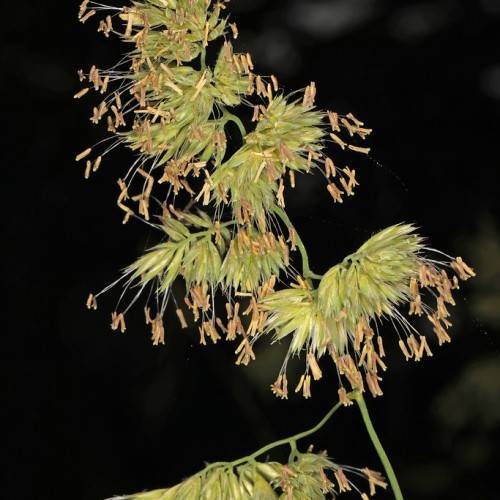
orchard grass
Dactylis glomerata
Cycle:
Herbaceous Perennial
Watering:
Average
Hardiness Zone:
5
Flowers:
Flowers In Summer
Sun:
Full sun, Part sun/part shade
Fruits:
Fruits Ready In Autumn
Leaf:
Yes
Growth Rate:
High
Drought Tolerant:
Yes
Salt Tolerant:
Yes
Invasive:
Yes
watering
Orchard grass should be watered regularly and deeply. To encourage deep root growth, water should be applied to a depth of at least 12 inches. Water should be applied to dry soil and should be applied in the early morning or late afternoon when temperatures are cooler to minimize evaporation. Depending on the area, approximately 1-3 inches of water should be applied per week. In times of high temperatures and low rainfall, additional water may be needed. Allowing soil or turf to dry out between waterings is recommended for orchard grass to help develop deeper roots.
sunlight
Orchard grass (Dactylis glomerata) prefers full sun and grows best when exposed to at least 6 hours of direct sunlight each day. This grass species is likely to suffer from low growth and poor health if it doesn’t get enough sunlight. However, in areas with extreme heat, orchard grass may benefit from some shade in the afternoon. In such cases, morning sun is best as it helps dry out the dew and provide important sunlight for the plant. In addition to the amount of sunlight, orchard grass also needs to receive consistent access to the sun each day, preferably at the same time of the day. Furthermore, areas of strong winds should be avoided as this may damage the grass’ ability to absorb sunlight.
pruning
Orchard grass (Dactylis glomerata) should be lightly pruned in late winter or early spring before the new growth begins. Pruning should be limited to removing dead or damaged stems and cutting back grasses that have become too long and straggly. It is important for the overall health of the grass to remove no more than 1/3 of the grass's foliage. Pruning more than this can lead to stunted growth or even grass death.
